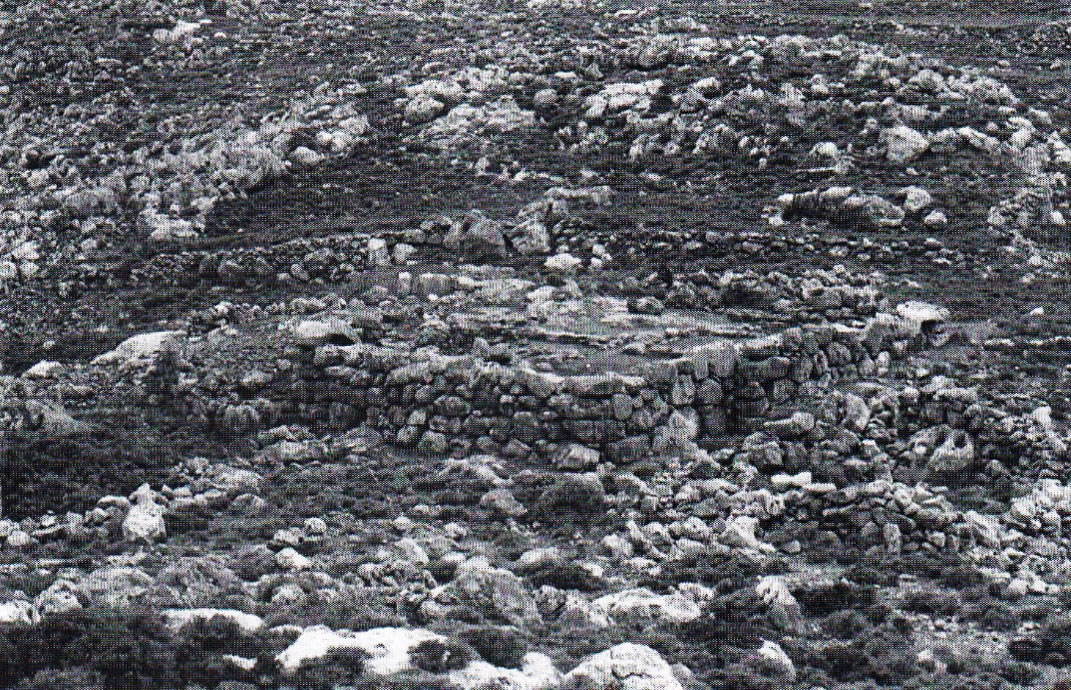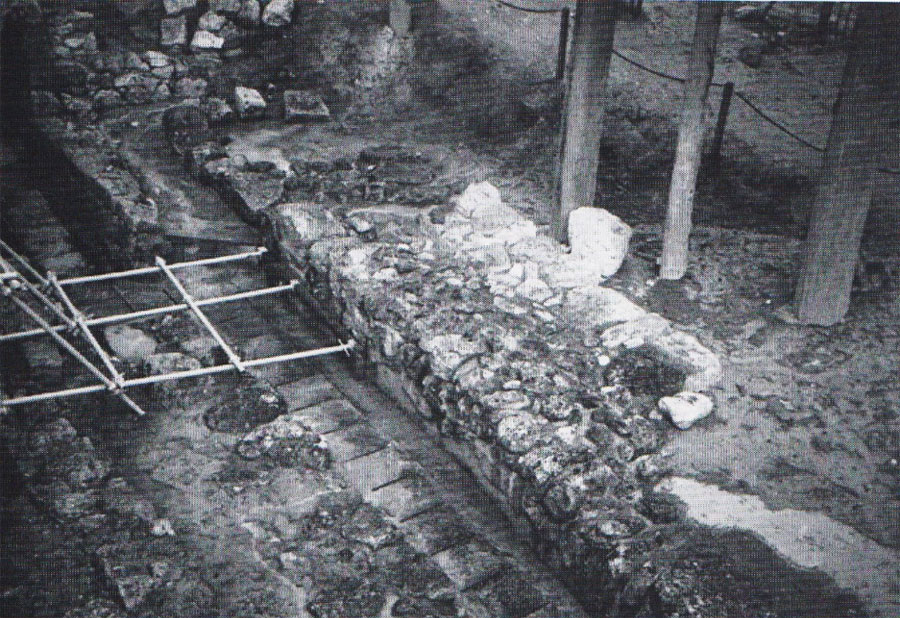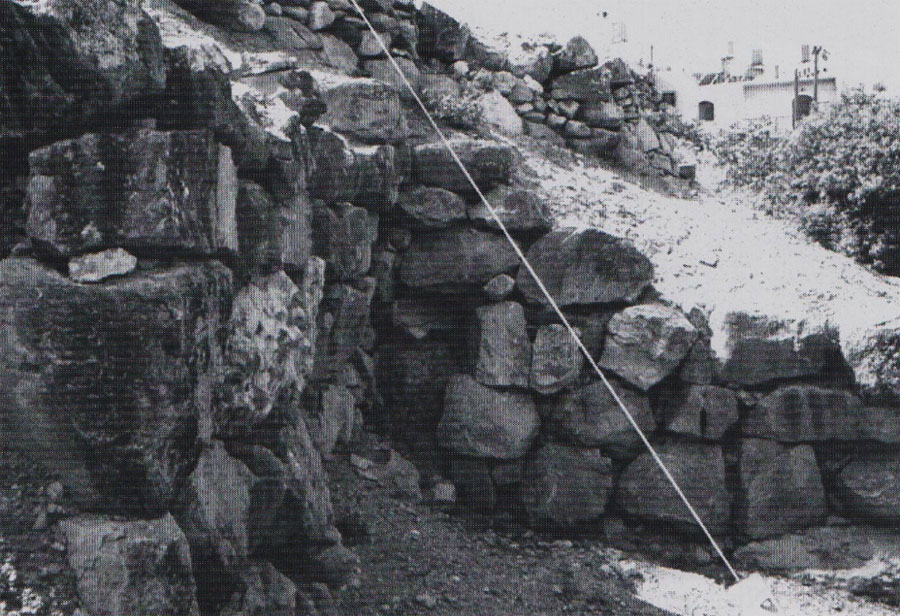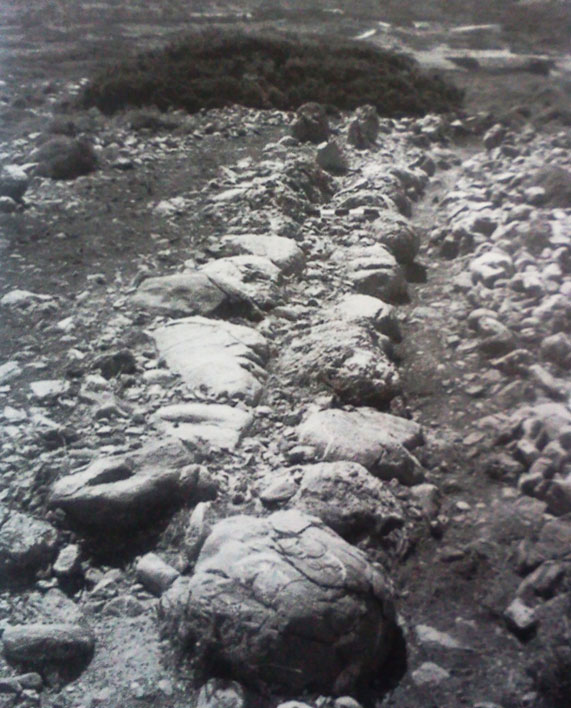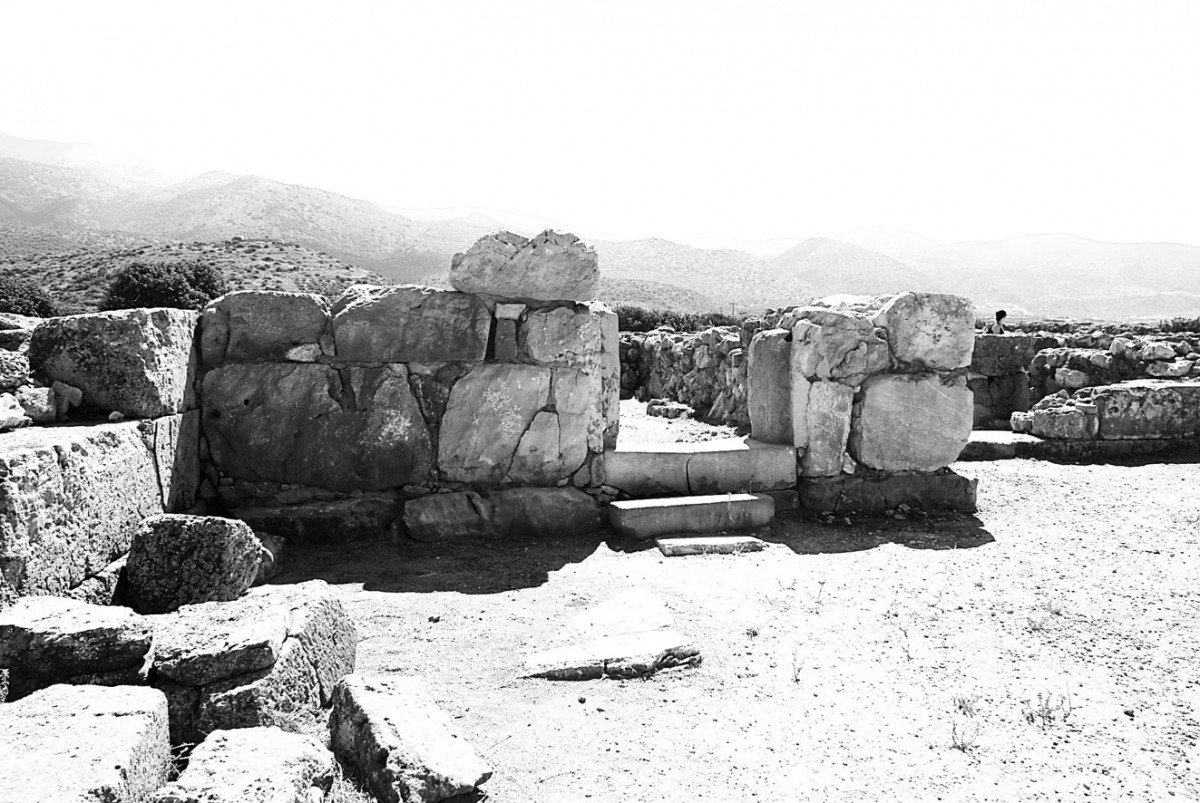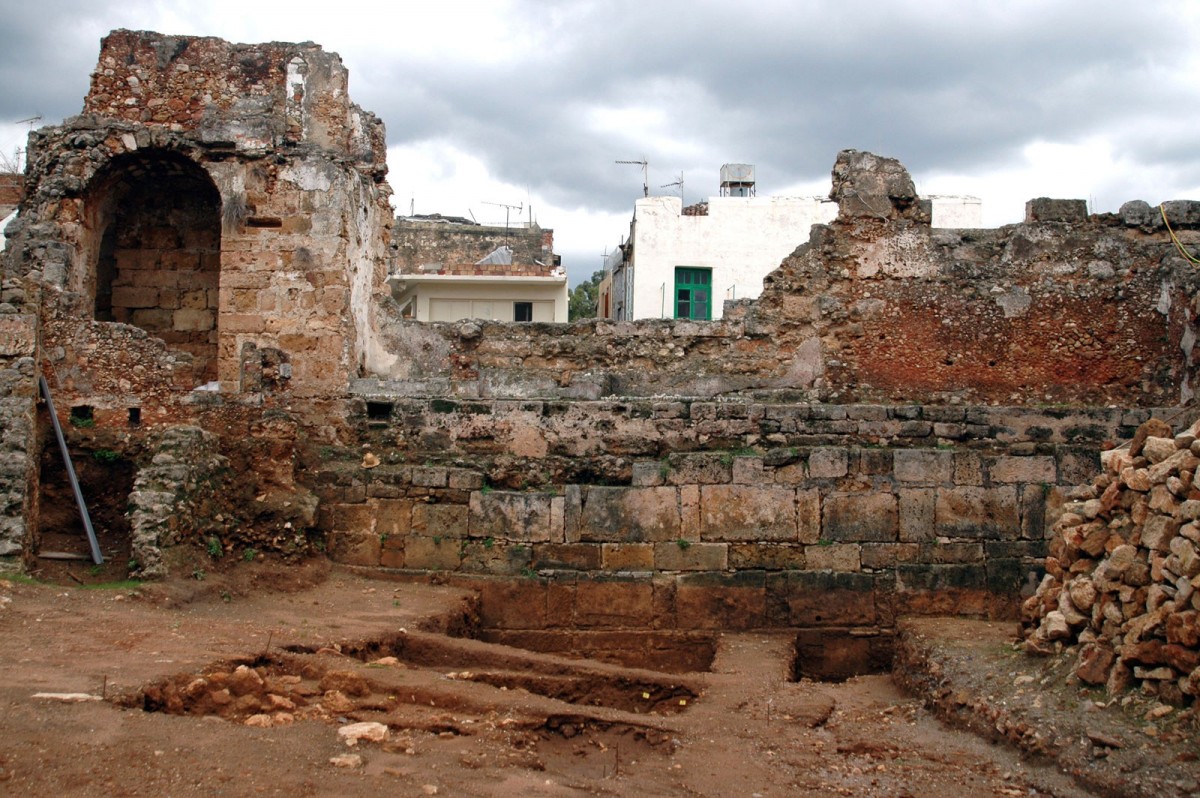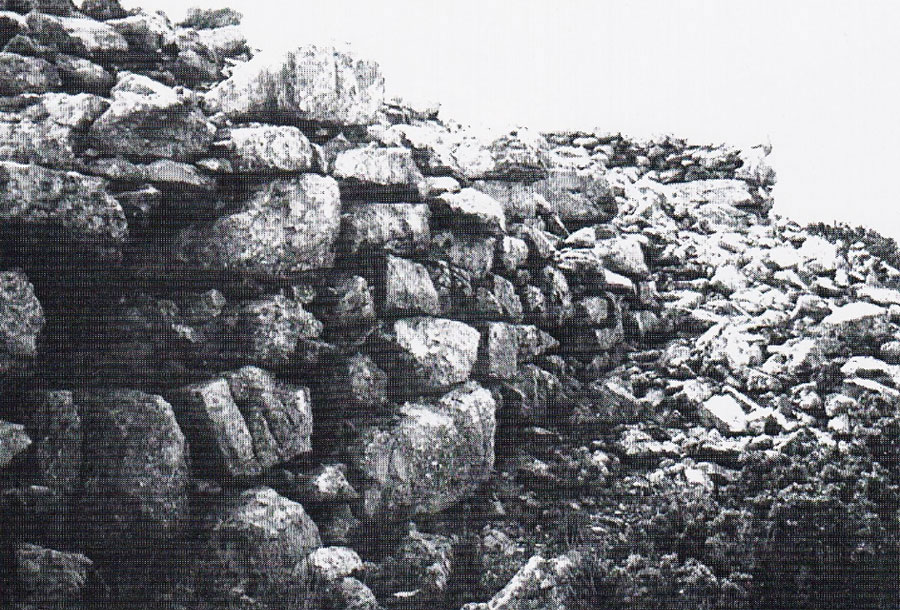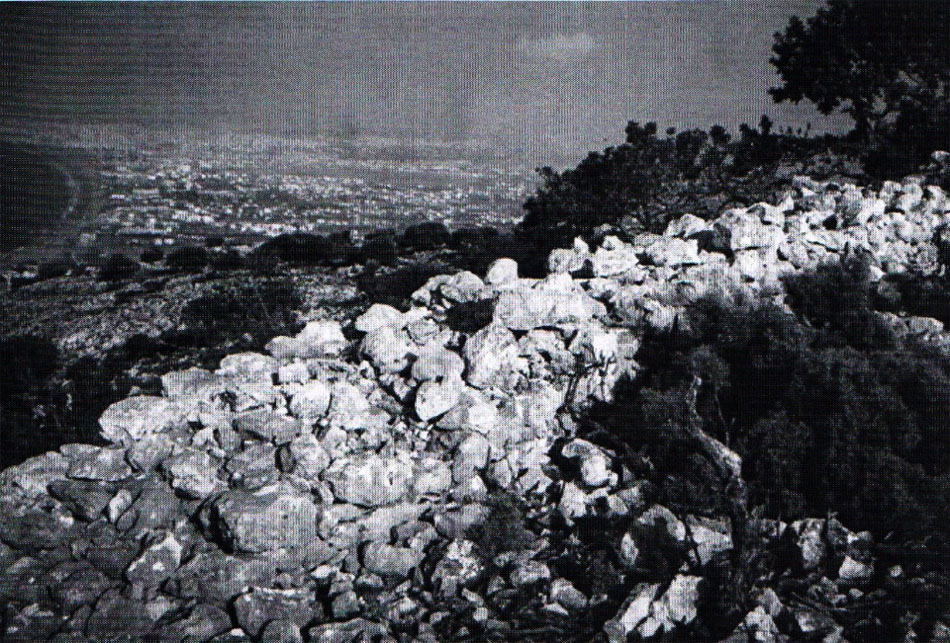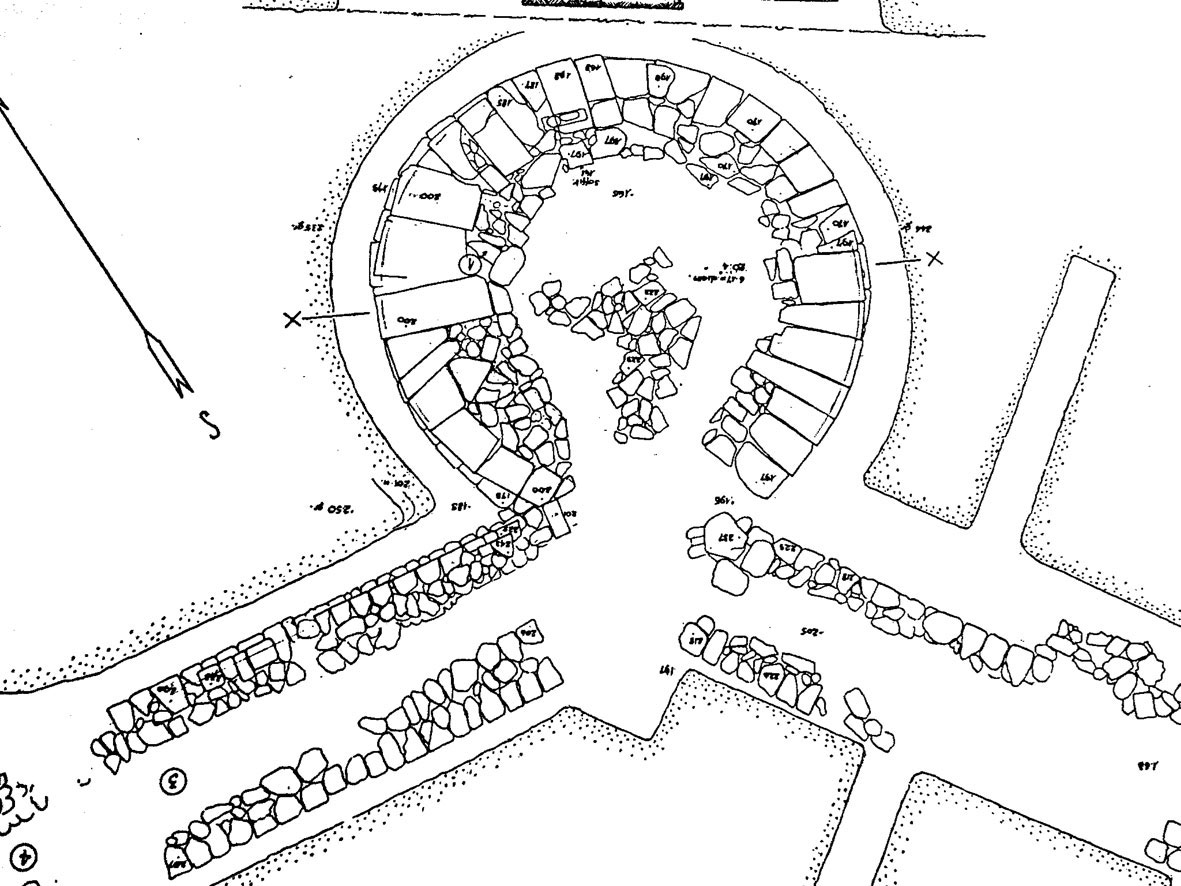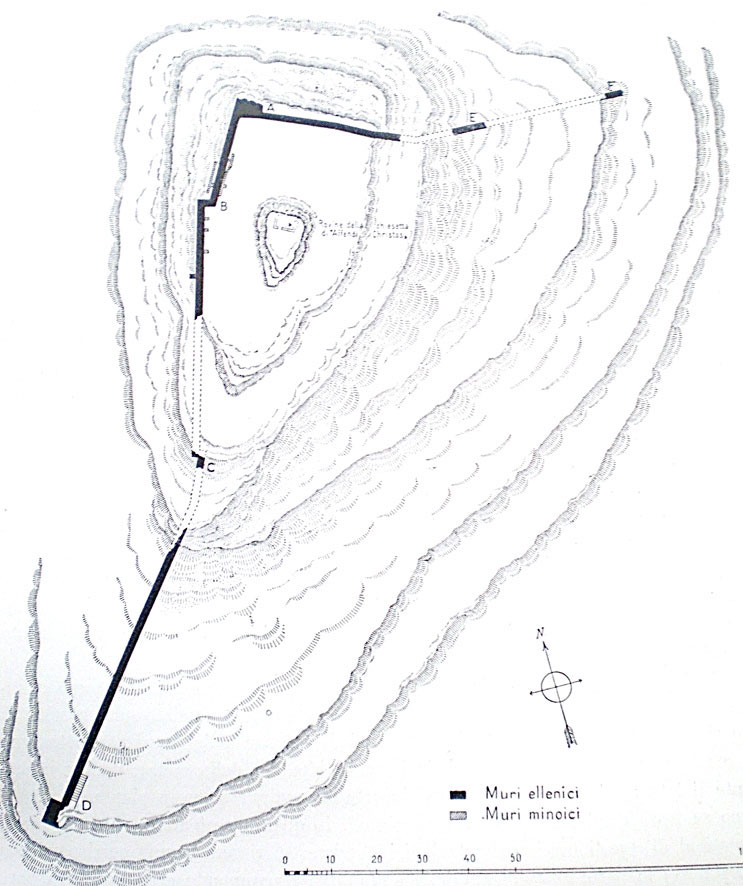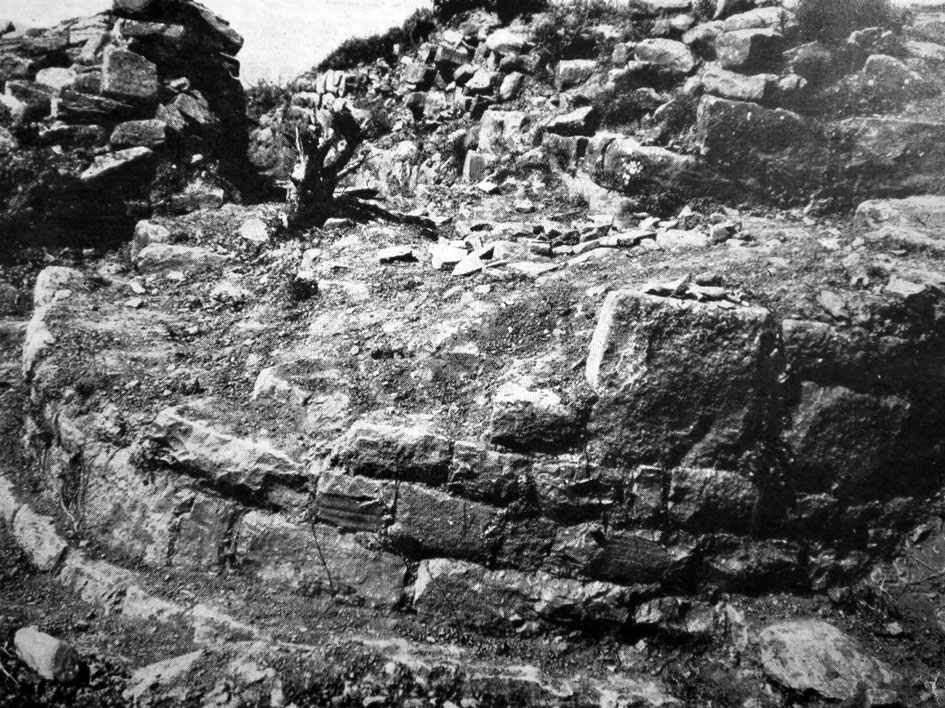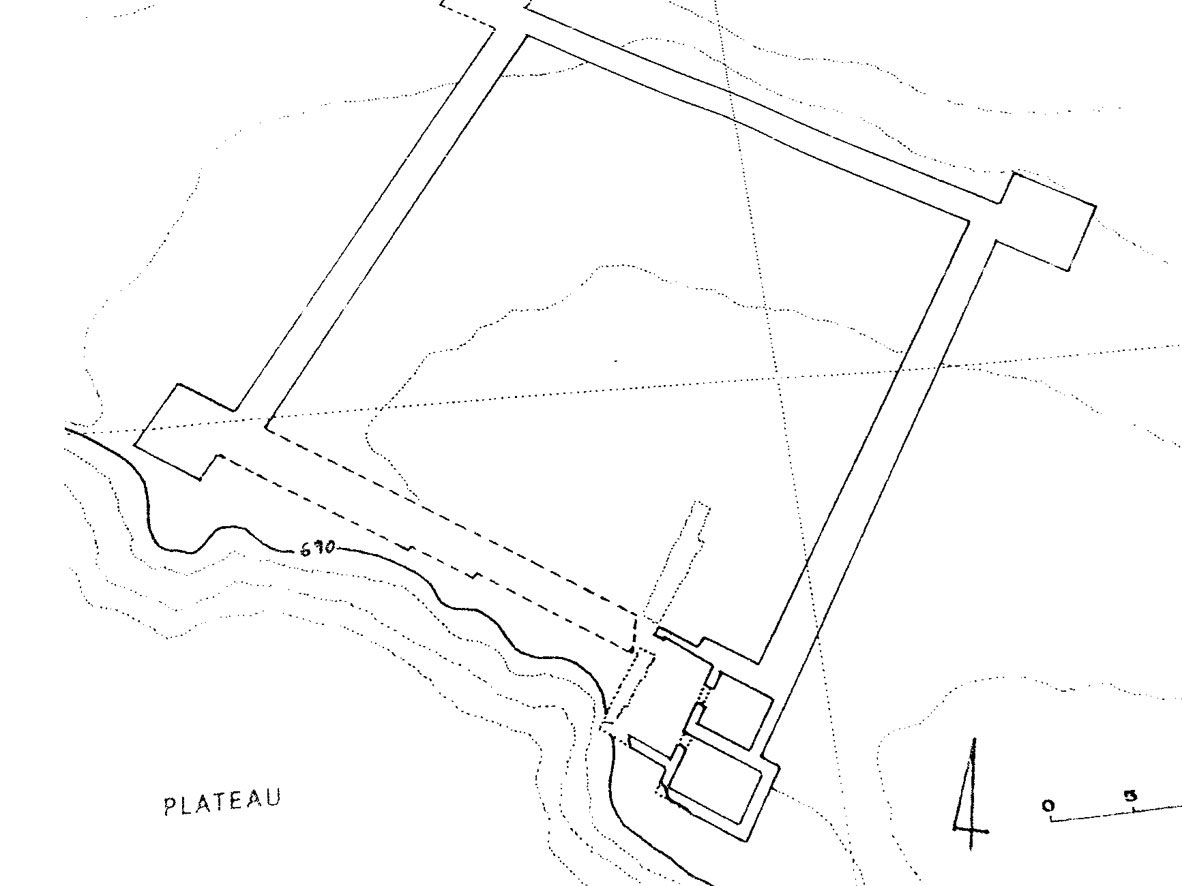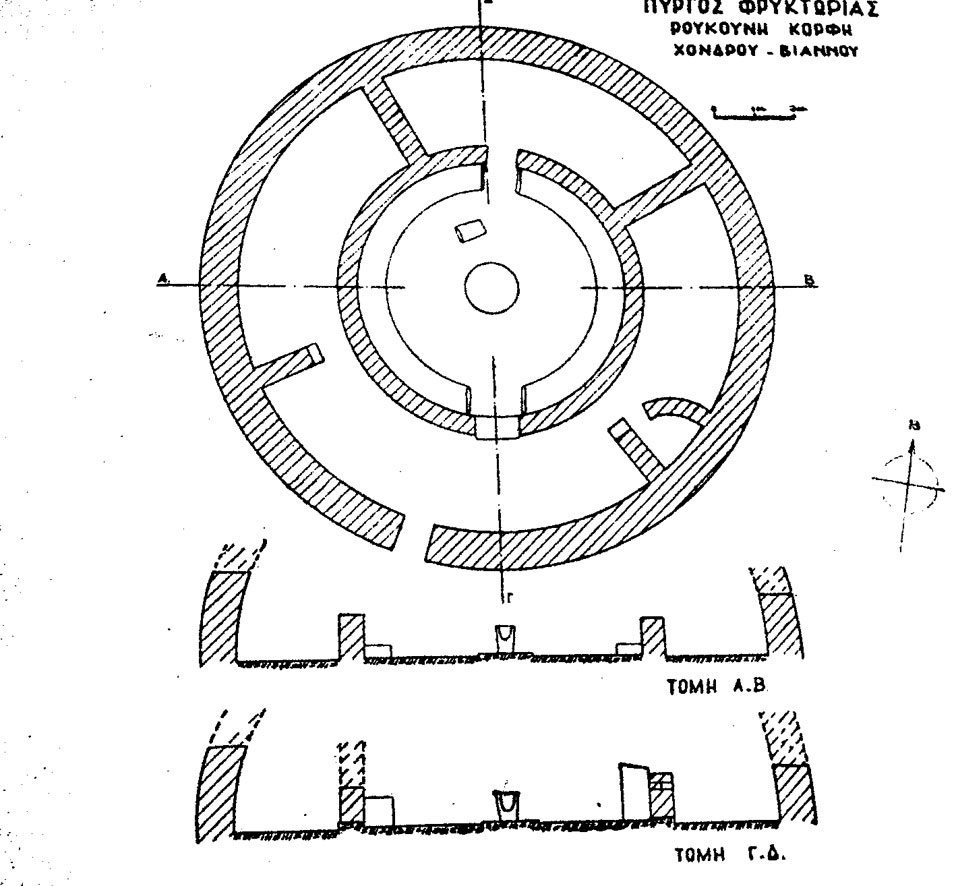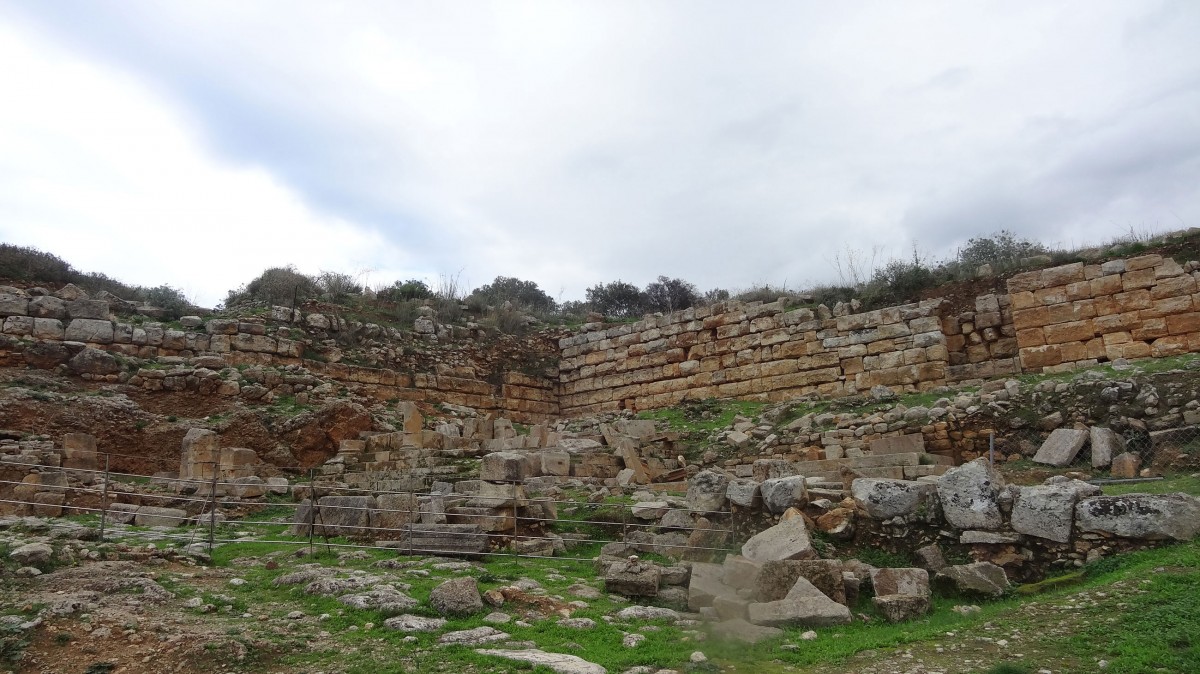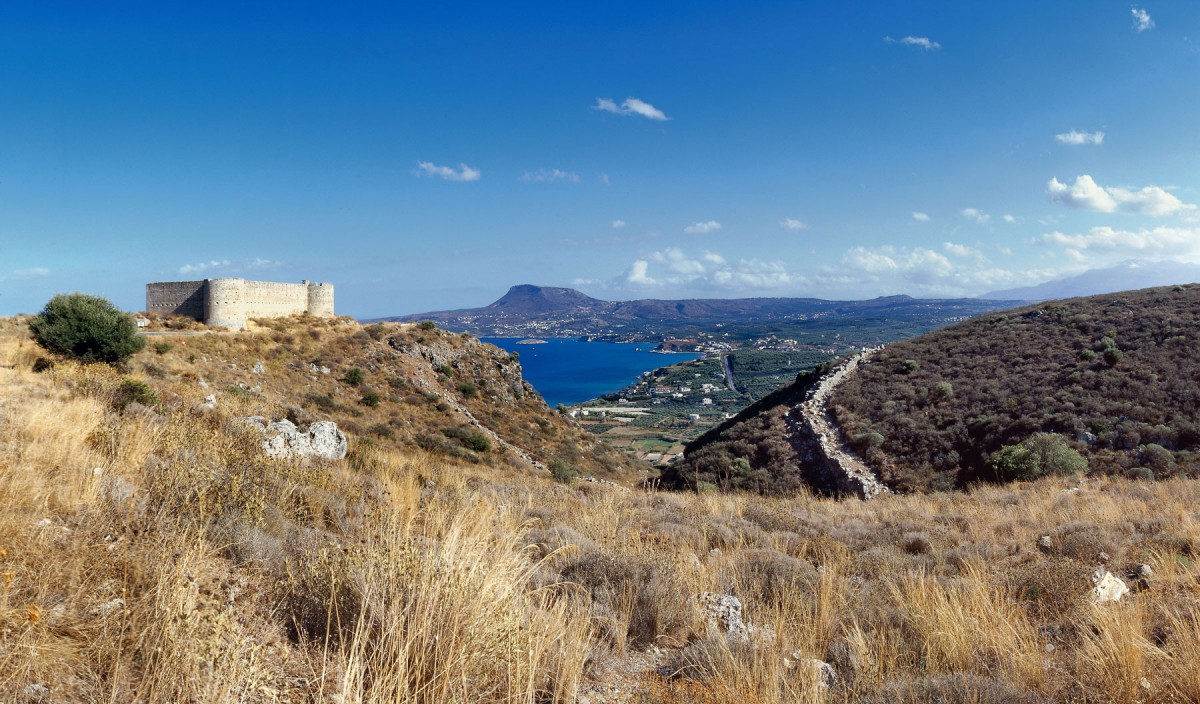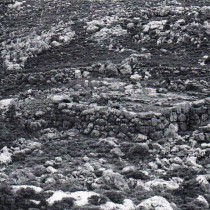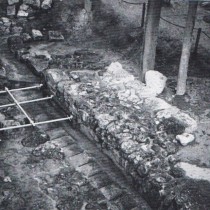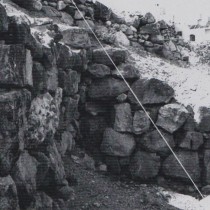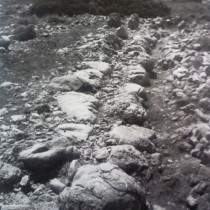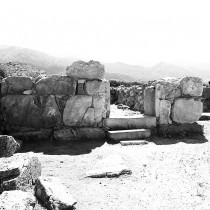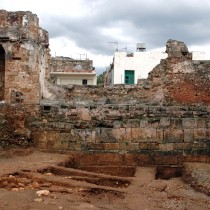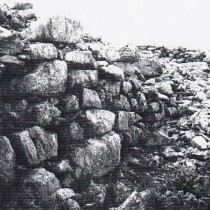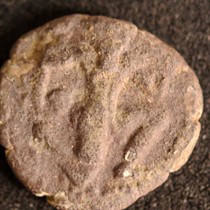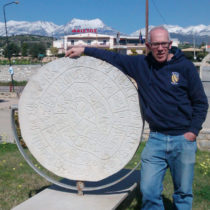Crete is located between the three continents of the Old World and was inhabited early on, in the Upper Palaeolithic period, around 25000 B.C. by populations possibly originating from all three continents. The first settlements have been located on the southern coast of Rethymnon and to the north of Herakleion. They constructed their huts on high ground, so as to control the area necessary for their existence. Later on, they made permanent homes and settlements for the needs of their household and to exploit the land and its natural resources. Next, the area became the property of the inhabitants and the settlement, to be protected from all claims or threats from neighbouring families or communities, as well as outside dangers. In the times of the palaces (2000-1300 B.C.), Crete evolved into a complex society through four factors that shape every society: politics, economics, religion and war. The situation in prehistoric Crete was not “peaceful”. On the contrary, many remains of fortification architecture, along with weapons and war scenes in the arts, indicate a warlike spirit. Peace is not a permanent state of affairs determined by a people’s mood, but the outcome of struggles, wars or upheavals that end with one element prevailing over the other and usually resulting in the destruction of buildings belonging to the defeated side. Archaeological monuments and written history both show that in no period of its history was Crete an exception to the rule.
In Crete of the Historic Times (11th c. B.C. to 5th c. A.D.), historic evolution was comparable to that of the Minoan Era. After the palatial powers were dissolved in the 12th c. B.C., a small number of new population groups came to Crete (“Dorians’’, “Arcades’’ et al.) and mingled with the old inhabitants (‘’Minoans’’) or others who had come in the last centuries (“Achaeans’’). Due to a general climate of insecurity, but also because of the morphology of the landscape, many populations took refuge in the hills. Later, they descended and organized city-states. In more flourishing parts of the plain (Knossos, Phaistos), life in the settlements carried on. During this millennium and a half, Crete went through various political, social and cultural phases. The centuries between the 6th and 1stcentury B.C. (Roman conquest) were times of civil conflict between the cities and their allies, ending in disasters, looting and even the demolition of buildings. Various wars are known from historical sources (e.g. the Lyttian Wars). Very little is known about these times, because few settlement complexes have been explored. Moreover, few fortification monuments have been systematically explored and studied, such as those in Phaistos, Gortyna, Prinias, Arcades (Afrati), Aptera, Eleutherna, Itanos.
Prehistoric Crete (4000-1100 B.C.)
Introduction-Forms/Aspects of fortification
Until recently, an essentially out dated, unsubstantiated theory has been repeatedly expressed in many books on the Minoan civilization, whether or not of general interest. Namely, that there were no fortifications. This suits the perfect picture of the “pax minoica’’ established and imposed by Arthur Evans, at the start of the 20th c., after the Knossos excavations. Evans also based his theory on the reference by Thucydides to “the sea domination of Minos’’. Nevertheless, Evans knew that the traveller Robert Pashley mentions the surviving, then 5 metres high ‘’cyclopean’’ wall, on the Psili Korfi (High Peak) of the Giouchtas mountain. Before excavating Knossos, Evans himself had located and recorded different types of fortifications in the Siteia region. In Knossos, moreover, he discovered the following samples of fortification architecture: the so called ‘’early storeroom’’ that he described as the foundation of a tower, the western fortification wall of the old palace courtyard and a corresponding one on the eastern side, a “tower’’ at the north entrance and rooms close to the palace entrances that Evans named “guard rooms’’. All of these were “hushed up’’ by Evans, in order to formulate the theory of the “peaceful’’ Minoan civilization that prevailed due to his, Evan’s, great prestige. In the first half of the 20th c. however, several monuments of fortification architecture had already seen the light of day. The “city wall’’ at Gournia was revealed but then ignored, although referred to in the publication. In Malia, remains of walls made of big stones were revealed, to the north of the Minoan city and were interpreted as fortifications. John Pendlebury confirmed the existence of the fortification buildings explored by Evans. The former, in his exploration of the Diktis mountains in the 1930s, studied the prehistoric “stations/watchtowers’’, stressing their military character. Approximately between 1950 and 1980 but also to this day, a multitude of locations, clearly related to fortifications and defence, have come to light with surface investigations and excavations carried out in the whole of Crete. After the 1970s, the myth of “minoan peace’’ was undermined by many studies. The turning point came in the late 1970s with a fresh discovery by Stylianos Alexiou of Minoan fortifications. The persistent belief in “minoan peace’’ is explained by the fact that usually signs, such as all types of fortifications that seriously indicate a “climate of war”, are hushed up or not taken into consideration. In a recent systematic study of defence architecture in prehistoric Crete, the number of relevant monuments is over 350, in 200 locations. The following Cretan place names are characteristic: Pyrgos, Vigla, Vigli, Vigles, Kasteli, Kastelopoulo, Kastelos, Kastelas, Mouri, Volakas, Kefali, Kefalaki, Kefala, Kastro, Kastri, Kor(y)fi, Papouri, Papoura Fortetsa, Paliokastro et al. Defence architecture is located in all the residential locations; palaces, villas, cities and settlements.
Six types of defence architecture are recognized; a) enclosure walls, b) guard houses (fortresses, watch towers), c) beacons (“piles’’), d) towers and ramparts, e) arrangements of systems for access and f) guard rooms.
a) Enclosure walls: They are the oldest and most basic type of defence architecture in Crete and the second largest group of defence works. They were used for setting boundaries, controlling, defence and other objectives. Many types or variations can be distinguished: 1) low enclosures (walls), 2) enclosures of houses or settlements, 3) enclosures of guard houses, 4) fortification walls of settlements, 5) fortification walls of cities, 6) fortification walls of palaces, 7) fortification walls of villas, 8) fortification walls of a section of the settlement (“citadel’’), 9) settlement/shelter, 10) fortifications of peak sanctuaries and fortifications of wells. Materials used for their construction were local roughly hewn stones, wood and mud bricks. Those constructed of big stones have been named “cyclopean’’. They had two sides and the space between them was filled with small stones and soil.
b) Guard houses or forts: They are the largest group of defence works and the most complex. Architecturally they resemble farmhouses and were built near roads, passes or wells so as to guard them. They were usually built of megalithic stones. Already in the 19th c., they are the first fortification works to have been located in Crete. The best examples are to be found in the bay of Karoumes in Siteia, to the north of the bay of Zakros. They are alone in the landscape, without settlements. Three types can be recognized: parent guard houses, main guard houses and seasonal watch towers (vigles). They appeared in the Late Neolithic age and were in use till the end of the Minoan period. Usually they belong to a network of fortification constructions.
c) Beacons (piles): This is a category of monuments of defence architecture and communication that was recently discovered and systematically studied. Minoan beacons were located in the 1980s, in the Pediada province and recorded as a new category of archaeological site. They are found on hill tops and mountain ridges and control the paths. They are shaped like a truncated cone whose base’s diameter is between 15 to 47 metres, its height is 3-8 metres and has an artificially flat top on which fires were lit. They are made up of soil and walls that are semicircular and also radial for better support, filled on the inside with soil. They were manned by people from nearby settlements and controlled by the local authorities. They date mainly from the Early Palatial period.
d) Towers and ramparts: The third largest type of fortification are towers on high or key points of enclosures and big buildings (palaces or villas). They were made of big stones (“cyclopean’’ or megalithic). The most ancient examples have been found at Fournou Korfe of Myrtou , at Malia, Vasiliki and other locations in Ierapetra. Towers existed all through the Minoan period. In the Old Palatial period, individual towers were established in Knossos, Malia, Zakros, Petra, Gournia, Palaiokastro and elsewhere. They are either circular or elliptical, semicircular or semi elliptical, rectangular or trapezoidal.
e) Arrangements of systems for access: Included in this type of defence architecture are improvements and modifications made to the systems of main entrances to large buildings (palaces, villas). Their aim was to restrict the access to the city or the building by narrowing or blocking it. They date from the Neo Palatial or Post Palatial period. Examples are found in the palaces of Knossos, Phaistos and Zakros, the palace and city of Malia, in Gournia, Tyliso, Vathypetro, Prassa, Xeri Kara in Acharnes, in Nirou Chani and Tourtoulous in Siteia.
f) Guard rooms: They belong to the smallest group of defence architecture. They are rooms next to entrances of big buildings (palaces and villas), or next to entrances of enclosures and are meant to guard them. They have been located in the palace and enclosure in Knossos, in Phaistos, Tyliso, Petra, Chondro and Pseira.
From studying fortifications and their location, it appears that there were three successive lines of defence. The first was the system of guardhouses and enclosures whose aim was to guard, oversee and isolate the enemy, while, at the same time, warning the political/residential centre with beacons. If the attacker went beyond the first line of defence and approached the settlement, city or large building (palace or villa), whose inhabitants had been warned and were obviously prepared, then the second line of defence operated. This consisted of the fortification enclosures that could halt the attack. The towers and ramparts of either the palace or the villa made up the third line of defence.
Evolution through history
More recent research has shown that fortifications existed in the Final Neolithic period (2nd half of the 4th millennium). New locations for settlements were established on rocky hills near the sea. A naturally inaccessible place was reinforced with fortification walls or enclosures, while often the gaps between the rocks were filled with boulders. A hypothesis has been made that the defensive form of organizing space was introduced to Crete by the inhabitants of the Asia Minor coast and the islands of the eastern Aegean.
In the Pre Palatial period (3rd millennium B.C.), there was an increase in the number of settlements, that created a “demand’’ for living space and increased the danger of neighbours claiming land. Fortified enclosures have been located in many settlements of the Pre Palatial period. Stylianos Alexiou has spoken of ‘’citadels’’. Apart from enclosures, towers/ramparts and guardhouses make their appearance. The settlements in Fournou Korfi in Myrtou, Ierapetra and Trypiti in southern central Crete, in Aghia Fotia and Chamaizi, Siteia are typical examples.
During the Old Palatial period, the first palaces were founded around 2000 to 1900 B.C. in central positions, where flourishing settlements had developed in the 3rd millennium. Their founding meant that economic, social, religious and political authority became centralized. Round them developed cities that added fortifications and expanded. Fortification enclosures have been discovered with towers and ramparts to protect the cities and the palaces. Fortifications of the cities and palaces were discovered in four palatial centres (Knossos, Malia, Monasteraki, Petras). On the surrounding hills, watchtowers (vigles) and guard houses were built to control the passes and oversee the district. Such monuments have been discovered and excavated in the mountain area of Lasithi (Tsoule Mnema) and in the mountain area of Siteia (Karoumes and Choiromantres, Zakros). Settlements such as Pyrgos in Myrto, Ierapetra, with central administrative buildings and villas, had fortification enclosures. Another type of defence architecture developed in palaces: the guard rooms located in Phaistos and Knossos. Beacons (“Piles’’) are among the most wide spread technical works for defence and warning, during these times.
In the Neo Palatial period, following the destruction of the old palaces in 1700 B.C., new ones were built as well as villas with palatial features. Most defence works of all types were made during that time which, according to Evans, was the period par excellence of ‘’minoan peace’’. There are few fortification enclosures during the first phase of this period (those known are in Palaiokastro, Aghia Triada and Gournia). Guardhouses were the main line of defence to keep any threat of attack far from the city or palace. Tower like constructions are placed in corners or near entrances in both palaces and villas. Important information on a fortified city is given in the ‘’seal of the prince’’ from Minoan Cydonia. Towers have been located in the palaces of Knossos and Malia and the villas of Vathypetrou and Zou in Siteia. During these times, two more types of defence architecture are used; the arrangement of access systems and the guard rooms. In the second phase of this period, these forms of fortification were present in all palaces, after the eruption of the volcano on Thera in approximately 1600 B.C. and the subsequent climate of unease.
The Final Palatial period (1450-1300 B.C.) has not been located in many places, so that its fortification architecture is not very known. Guard rooms existed in a few places, as well as fortification enclosures in Phaistos, Petra and in Chondro Viannou, while both arrangements of access systems and guard rooms were found in Knossos.
In the Post Palatial period (1300-1000 B.C.), the situation in Crete was relatively troubled. There was a revival of cyclopean enclosures with towers and ramparts in Giouchta, Kofina, Kastrokefala in Rogdia and Kato Kastelo in Siteia. At the end of the 11th c. settlements were founded in Kastri Palaiokastrou and Karfi Lasithiou, Vrokastro, Kavousi (Vronda and Kastro), in Monastiraki- Katalymata and in Chalasmeno, all on the Ierapetra isthmus. Other locations were in Throno Amariou (Syvritos), Kourtes Zarou and Ergano Viannou. During this period and the next, there was a flourishing of settlement-shelters with fortification enclosures that were real “citadels’’.
Crete in Historical Times (10th c. B.C.- 5th c. A.D.)
Introduction- Types of fortification
We do not know if, in historical times, the “hundred’’ cities of Crete were fortified as a whole, or just their citadels. Several fortifications were saved and are visible, but few have been systematically studied. In books of general interest, fortifications are not mentioned and there are no systematic studies. Some things can be confirmed from scattered information. In the first centuries (100-500 B.C.), the types of fortification architecture are almost the same as those in Minoan times but more “regular’’. There are fortification enclosures, walls, fortresses, towers and beacons. They do not have the same form over the centuries. The outside walls of houses in earlier settlements were built with big stones and, for reasons of defence, had no openings.
The most important types of fortification works in classical and Hellenistic Crete are the following: a) Towers (watchtowers), circular or square constructions, isolated in open spaces or incorporated in the line of a fortification wall. b) Fortresses (castles) for gathering and protecting the population, usually found in the citadel or some high hill surrounding the city. Their shape is square or trapezoidal and they have fortification towers. c) Beacons, a type of round observatory with a system for communication and alerting, from region to region, by using fire.
The system used for the fortifications’ construction differs from place to place. The prevailing system for the construction of walls is the rectangular one in the following three types: a) Irregular masonry with rectangular stones of different dimensions, b) Pseudo isodomic masonry with blocks of different heights, c) The ashlar system with stones of the same dimension. Polygonal masonry was also prevalent in other ancient constructions and the building of terraces or retaining walls.
The Early Iron Age (1100-500 B.C.). In the first centuries, Crete experienced a relative cultural decline that quickly gave way, from the 9th century, to an important cultural evolution. Originally, settlements were founded on hills, where settlement-shelters had pre-existed and were fortified with enclosures, towers and fortresses. These places evolved into citadels of the city-states that developed after the 8th century B.C. Fortified settlements on hills, of this period, are the following; Karfi which was abandoned peacefully in the 10th century, with its inhabitants settling lower down in Papoura, Vrokastro which was inhabited till the 8th century, Kavousi, inhabited from the 11th to the 6th century, Kefala Vassilikis inhabited in the 11th and 10th centuries, Gria Vigla Pompias near Phaistos, founded in the 11th century and abandoned in the 9th century, Kourtes Zarou, Praisos, Gortyna and Prinia that were inhabited from the Post Palatial down to and including the Hellenistic period. The settlement of Phaistos was fortified and spread to the west and north of the Minoan palace. The founding of Lyttos in Kasteli Pediadas, Arkades in Afrati Viannou, Ligortynos, Rytios, Lykastos, Maza in Kalo Chorio Pediadas, Driros, Latou, all date from those times.
Classical, Hellenistic and Roman times (5th c. B.C.-4th c. A.D.): In the next five centuries, Crete is absent from political and cultural developments of the Greek world and is afflicted by the cities’ interior conflicts resulting in the destruction of the defeated. Few things are known about the classical centuries, but it seems that they continued to have their fortifications. In the 2nd half of the 4th century, there is a tendency towards new fortifications or the repairing and incorporating of old ones. In the three Hellenistic periods to follow (323-67 B.C.), Crete is the bone of contention between the great powers of the period (Macedonians, Ptolemies, Seleucids), while in 67 B.C. it is conquered by the Romans and turned into a province of theirs, after a bloody resistance by the Cretans. During roman rule, it seems that the cities’ fortifications were deserted until the Early Byzantine period (4th-7th c. A.D.), so that there were shifts of power in the eastern Mediterranean.
Fortifications have been excavated or explored on the surface, in approximately 25 locations. The following have been more systematically studied: Itanos and Trypitos in eastern Crete, Gortyna, Knossos, Phaistos, Arkades in Afrati, Prinia and the beacon of Viannou in central Crete, Aptera, Falasarna and Polyrrinias in western Crete. They are briefly presented below.
Itanos: This powerful city in the far corner of eastern Crete had two citadels, one to the east and one to the west, on low slopes, ensuring defence both from land and sea. The fortification of the eastern citadel included two square towers and three guard houses. One tower survives from the western citadel. A polygonal enclosure with towers on its corners was traced on the southern slope. Inside the enclosure was a guards’ building (?).
Trypitos (ancient Eteia?): This small city is situated on a hill to the east of the city of Siteia. It is protected by a strong thick wall to the south, by land. One tower survived in good condition.
Xerokambos (ancient Ambelos): The lower city was on the south eastern coast of Siteia, in the area of Farmakokefalos. It was protected by a fortification enclosure, still preserved on its north and west sides. The fortified citadel was on the Kastri hill.
Pine Tower: In the district of Elounda Mirabellos, there is a fortress built in the cyclopean manner, with surviving, inscribed blocks (from a 3rd century inscription), used a second time round.
Roukouni Korfi (Viannou): The best surviving example of a beacon from historical times (2nd-1st c. B.C.) has been excavated here. The building consists of two homocentric circular walls. It was (perhaps partly) vaulted with a tiled roof, as indicated by the wall’s inward curve.
Knossos Sopata: To the north east of the Knossos palace and east of the destroyed royal tomb of the Isopatoi, a circular fortification tower has been excavated, in which two thick walls meet up. It belonged to some fortress that controlled the surrounding hills, both to the north and south. It may have been constructed during the Lyttian war (346 B.C.)
Arkades (Prophet Elias, Afrati) (Fortress): On top of the Prophet Elias hill there is a fortress with a trapezoidal layout and corners reinforced with circular towers. This is the citadel of the city of Arkades. A water cistern survives, connected with the fortress. It dates from the late 4th to the early 3rd century.
Prinias: (Fortress): The fortress is in the citadel, known as the “patela” of Prinias, near the village by the same name, in central Crete. Its ground plan is a square with four towers on its corners. It dates from the late 4th to the early 3rd century.
Phaistos: The fortified double wall is situated on the north and west side of the summit of the Afendis Christos hill (the “western” citadel), to the west of the Minoan palace of Phaistos, it has an irregular shape and is adjusted to the terrain. The foundations of two towers survive. It dates from the early 4th century.
Gortyna: The city’s fortifications were situated on three hills, defining it from the north. They were designed and realized by Ptolemy Philopator in the 2nd half of the 3rd century, during the 2nd Lyttian war (221-220 B.C.), restructured in the early 1st c. B.C. and abandoned in 30 B.C., after the roman conquest of Crete. The fortifications consisted of two parallel enclosures and an intervening “partition”. Small exterior towers were included in the outer enclosure, as well as a larger corner one for the guards’ quarters. 12 interior towers were part of the inside fortification.
Aptera: The city walls go all round the hill’s plateau, on which the city had been founded, and were constructed just prior to the mid-4th c. B.C. Their west and south west sides are built according to the pseudo isodomic system. Natural rocks have been incorporated into the south and east side, while there are polygonal stones in sections of the north side. The walls’ defence has been strengthened with a series of fortification towers. One of them is a square in ground plan.
Falasarna: The ancient city’s harbour was the only “closed” one in Crete and was part of the city’s fortification. It had four circular and four sided fortification towers, dating from the 2nd half of the 4th c. B.C. At the foot of the hill, to the north of the city, there is a double fortification wall with three defence bastions.
Polyrrinia: In historical times, it was a powerful city, at the end of the western part of Crete, built on a rocky hill with natural and man made fortifications. Sections of the citadel’s fortifications are visible and have been incorporated into that of the Venetians.
Dr Antonis Vassilakis
Archaeologist, Honorary Director of Antiquities
Editor of Special Issue: Michalis Andrianakis
Head of the Scientific Committee for the Enhancement of Cretan Fortifications
